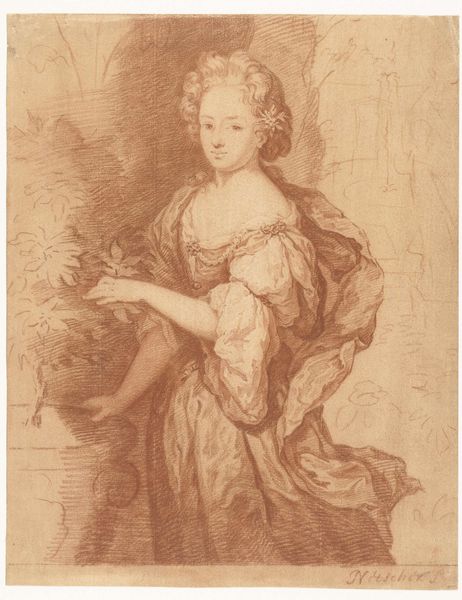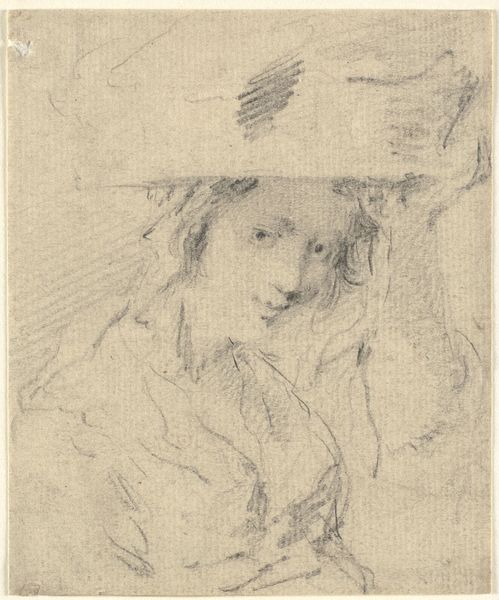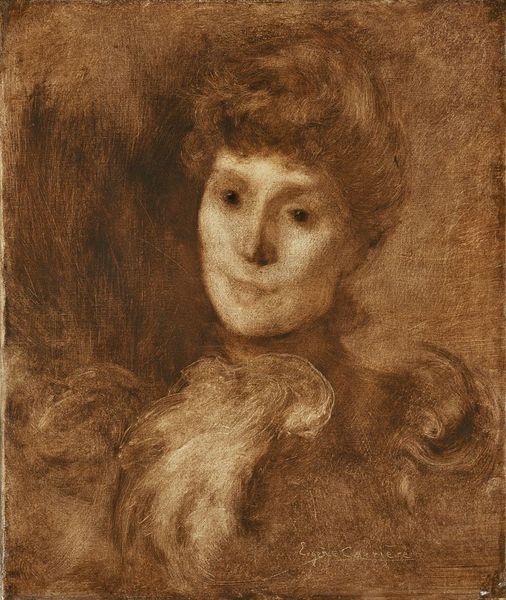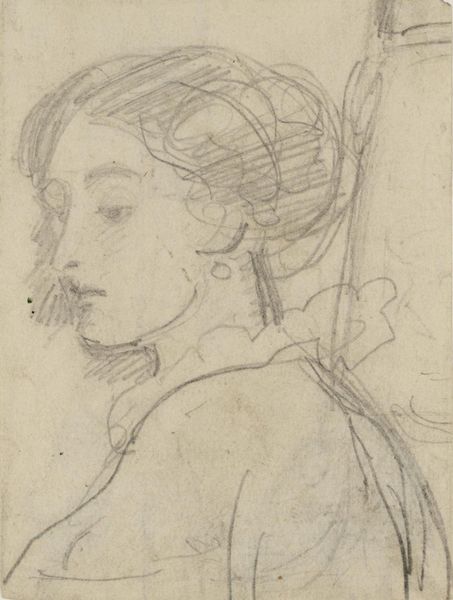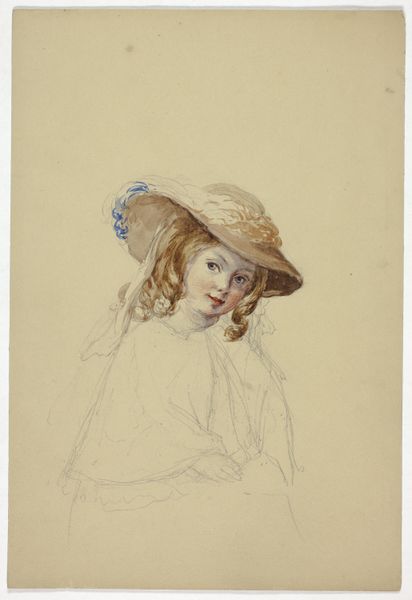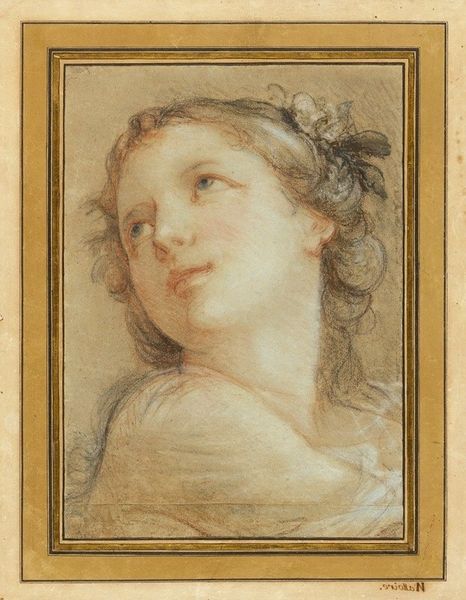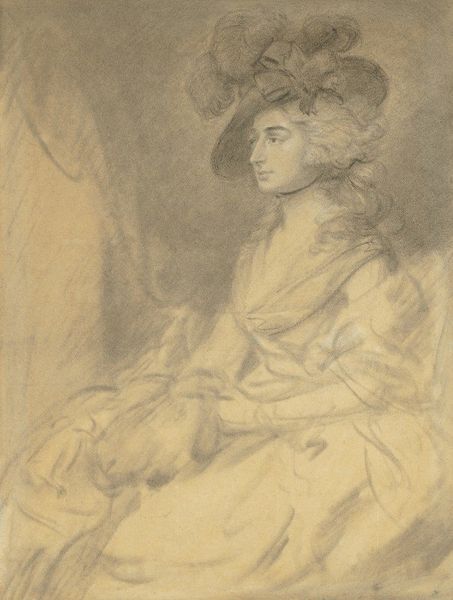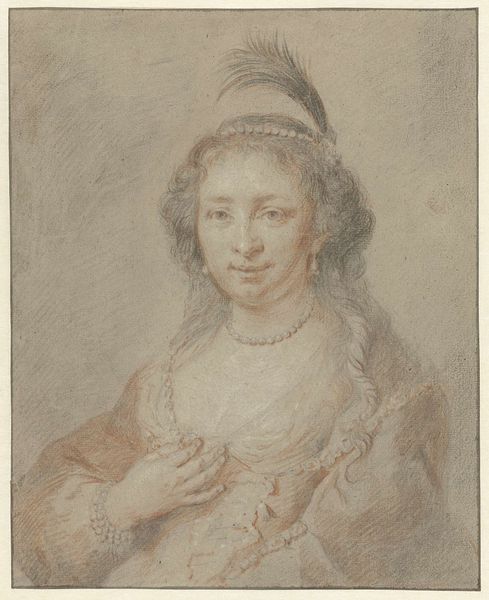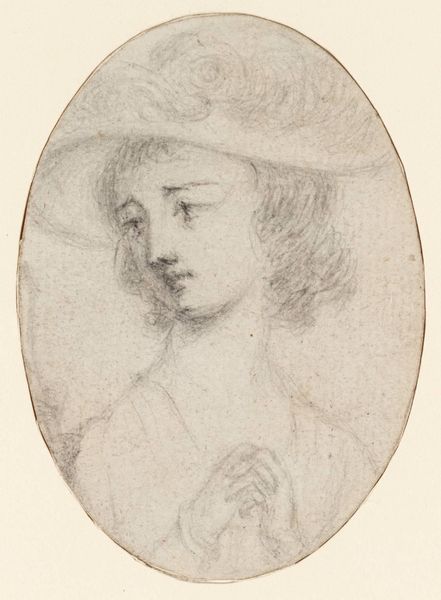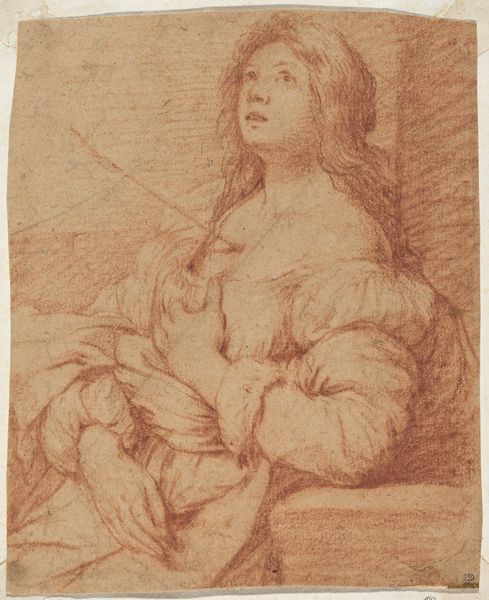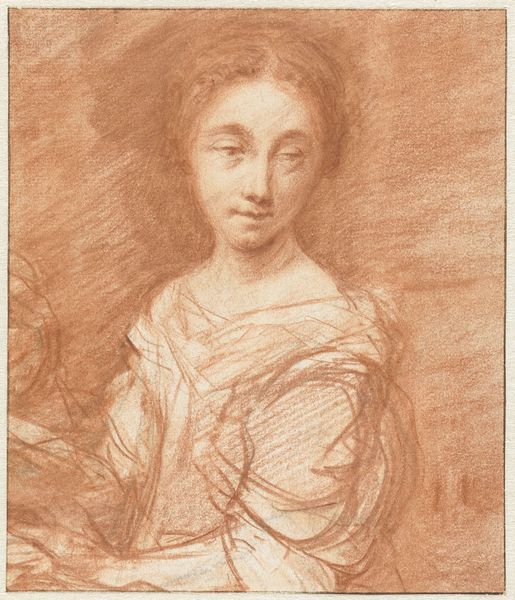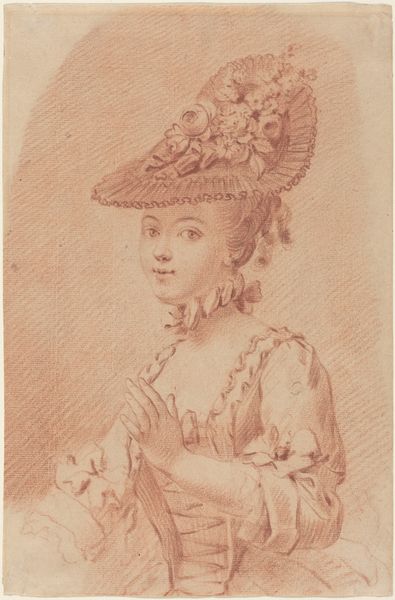
Copyright: Public domain
Curator: The delicacy here is striking. Pierre-Auguste Renoir's "Amelie Dieterle in a White Hat," created around 1894, immediately strikes me as a wistful reverie rendered in pastel on paper. The subject seems both present and somehow distant, framed by that arresting hat. Editor: Distant, certainly. There's a quiet, almost dreamlike quality. The pale palette, the slightly unfocused rendering – it creates an interesting tension with the subject’s direct gaze. It's more psychology than mere likeness, I'd say. What draws your attention first, symbolically? Curator: That enormous hat, definitely. It feels like a symbol of status, yet its almost floral shape reads like innocence. Think of the way hats functioned in portraits of women during the 19th century. It signifies bourgeois elegance, the 'feminine ideal,' yet its simplicity almost undermines the overt class signifiers. Renoir, always one to appreciate feminine charm, seems to capture her essence through this tension between adornment and unadornment. Editor: I find it interesting how Impressionism allowed, even encouraged, this play with identity. The sketch-like quality means we don't get firm conclusions. Is this Dieterle captured truly, or Renoir's feeling, even fantasy about her? This particular piece skirts the lines between private studies and the burgeoning commercial art market, given its likely place in a private collection. Curator: And let's not forget, too, the implications of the pastel medium itself. The immediacy, the softness… It aligns with the intimacy of a fleeting impression, just like the broader stylistic and art-market moves that shape Renoir's moment and legacy. One cannot escape that in a study like this! Editor: Absolutely, every choice reflects and reinforces broader socio-political and historical meanings about art, artists, and public appreciation. I come away sensing a deeper understanding about not just Renoir's subject but also of ourselves as viewers participating in these lasting cultural legacies. Curator: A most illuminating perspective, considering not only where we were, but where art's symbolism might take us!
Comments
No comments
Be the first to comment and join the conversation on the ultimate creative platform.
